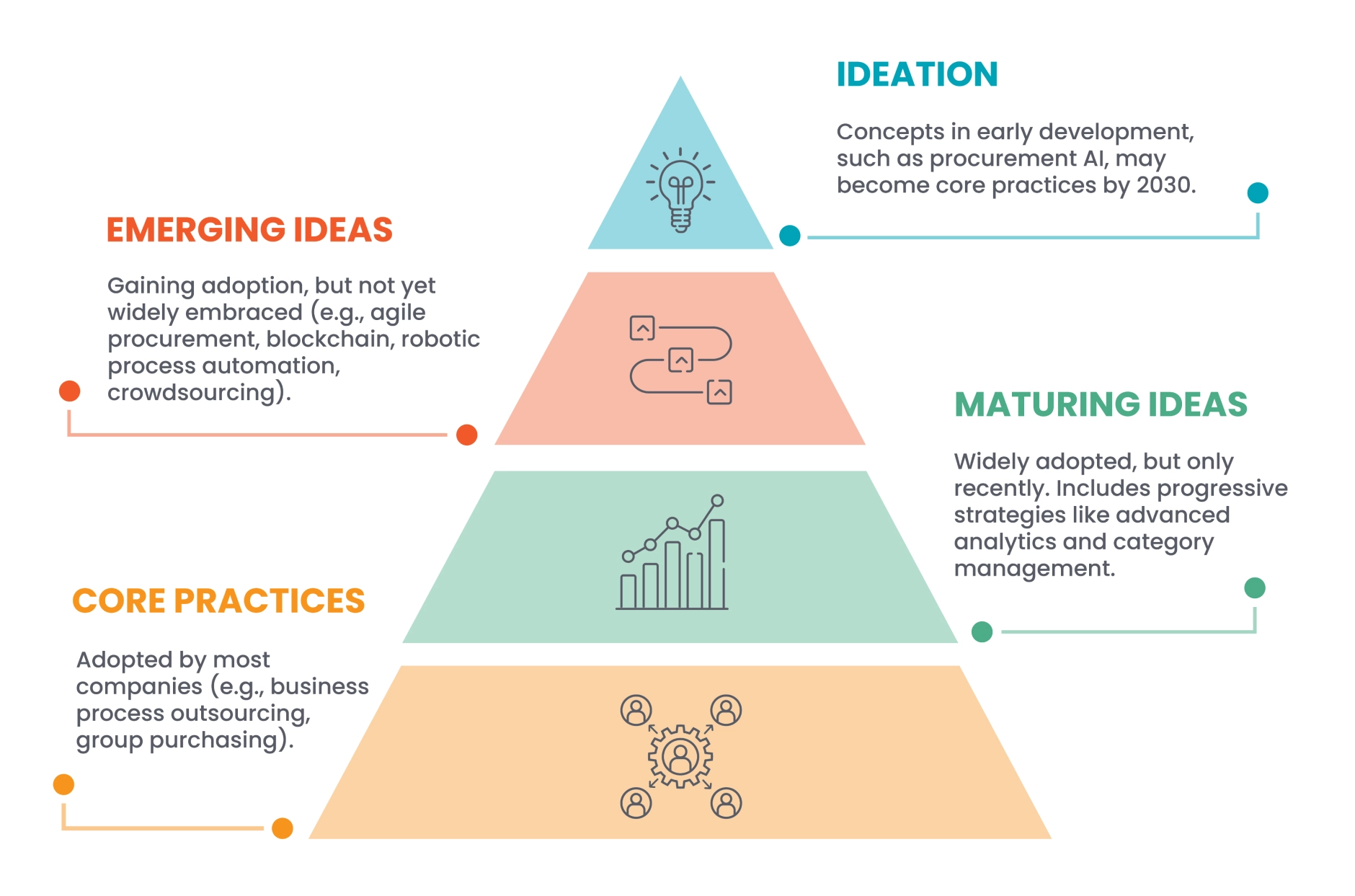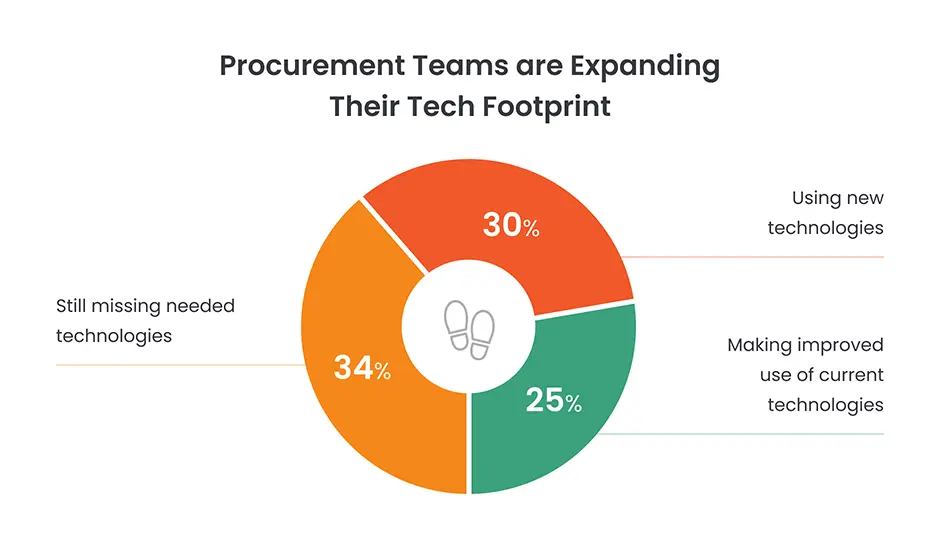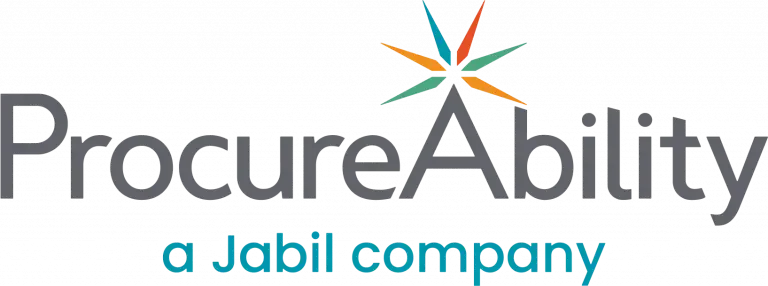During the formation of the ‘Bold Procurement Predictions for 2030′ Insights series, ProcureAbility was keenly focused on procurement teams’ maturity levels for accepting new practices and emerging trends. It quickly became clear that procurement organizations are all over the map in terms of the new processes and technologies adopted. Some are still mired in their core practices, while a small group of innovators are ideating new ways to leverage supply chain technology. The focus of ProcureAbility’s effort was at the very top of the pyramid below: ideation.
In this Insights series, ProcureAbility explores five emerging trends that procurement organizations should anticipate will transition from the top of the pyramid to the bottom by 2030, including advanced crowdsourcing, procurement technology acceleration, cognitive computing, hyper cybersecurity, and virtual organizational design.

ProcureAbility is pleased to publish its ‘Bold Procurement Predictions for 2030’ Insights series to help Chief Procurement Officers make sense of it all, highlighting the new practices likely to become common by decade’s end including advanced crowdsourcing, procurement technology acceleration, cognitive computing, hyper cybersecurity, and virtual organization design.
In this edition of the ‘Bold Procurement Predictions for 2030’ Insights series, the product of extensive research and input from a think tank of experts in the supply chain field–with a look at the rapid technology acceleration- is expected in the procurement practice by decade’s end. Chief Procurement Officers are already re-evaluating processes, with nearly one in four reporting that digital transformation is a strategic initiative in 2022.1

The majority of mid- to large-size organizations report using e-procurement and e-sourcing software, and we predict use will grow exponentially in the coming years. Artificial intelligence, machine learning (ML), and predictive analytics will impact human efforts for most administrative tasks. These seismic shifts in procurement technology stack will have a significant impact on how teams conduct business. Here are a few of the emerging technologies we expect to gain mainstream acceptance by 2030:
What Now?
IT executives must quickly begin investing in the technologies and systems that will educate their staff for the new standards sure to be widespread within ten years. Test and evaluate the innovative technologies so procurement experts may become familiar with them and how they will fit into an organization. Create an internal culture that encourages testing and adopting innovation. Today’s technology implementation that is well-thought out, deliberate, and sensible can lead to a streamlined procurement process by 2030.
Next in the ‘Bold Procurement Predictions for 2030’ Insights series: Cognitive Computing
Sources
1Ardent Partners, Procurement Metrics That Matter in 2022, June 2022
2Valuates Reports, Extended Reality Market to Grow USD $67.87 million by 2028 at a CAGR of 15.0%, 10 June 2022




